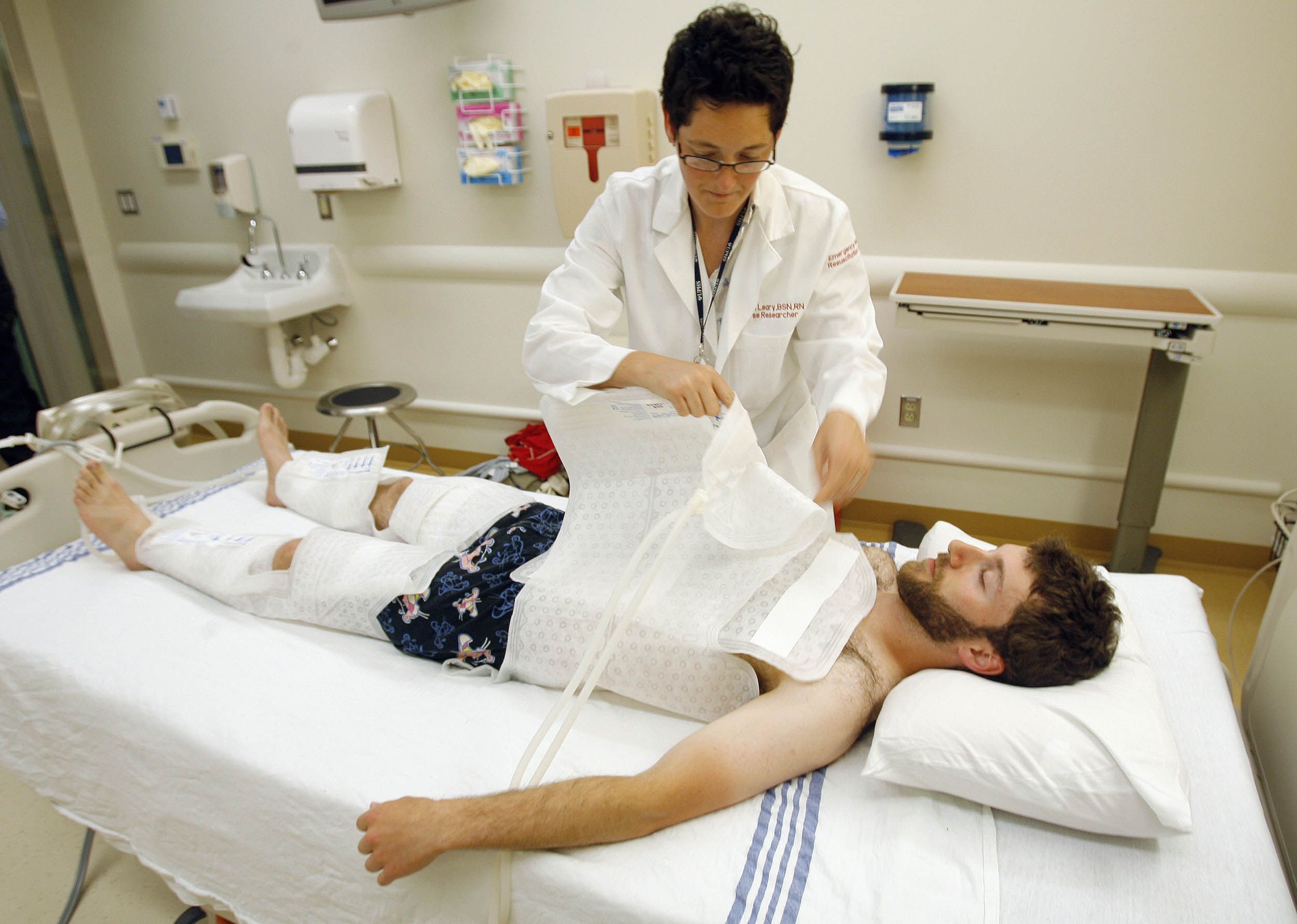To reduce the damage to his brain and organs, Brooks was rushed to the University of Pennsylvania, where Dr. Lance Becker and his team cooled the young man’s core temperature to below 90 degrees Fahrenheit—a process called “induced hypothermia.” This is often done to cardiac arrest patients, either by injecting them with a cold saline solution or placing ice packs on them to increase their chances of complete recovery.
The dose of cold saved his life. Brooks had no brain damage, a remarkable feat that has led doctors to explore more ways to use induced hypothermia in emergency settings.
Now Dr. Sam Tisherman and his team at the University of Maryland, in collaboration with the University of Pittsburgh, plan to put 10 patients into a more severe form of hypothermia than what Brooks got, something known as “suspended animation.” They’ll flush their bodies with a cold fluid, cooling (and therefore preserving) tissue. The experimental trial, known as emergency preservation and resuscitation for cardiac arrest from trauma ( EPR-CAT), is funded by the U.S. Department of Defense, and it is the first time doctors are harnessing profound hypothermia (pushing body temperatures to as low as 50 degrees) to save lives.
